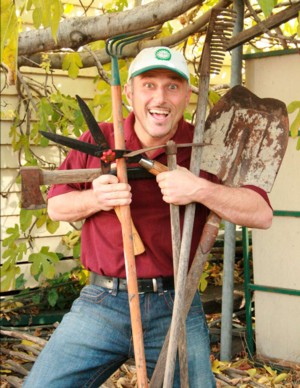Forget the cheap stuff and stock up on these quality gardening tools
by Helen Tuton
The environmental impact of continually replacing cheap garden tools is astounding if you consider the use of resources that go into the manufacture of most of the cheap, imported garden tools on the market, not to mention the (often) excessive packaging and transport costs. Embedded water, carbon emissions and the significant contribution these broken tools make to landfill are reason enough to buy the best. So, while the initial outlay for some of these top-of-the-range garden products can be a little daunting, consider the savings you are making in the long run. Good-quality tools should last for years provided they are cared for.
So how do you choose the right tool for the job?
Secateurs: Top-quality secateurs (eg Felco) cut better and are easier to sharpen, more comfortable to use and easier to maintain. Look for handles with rubber shock absorbers and cushion to protect the wrist, toothed centrenut for aligning the cutting and anvil blades easily and precisely for a clean, accurate cut. Remember to try out the product before you buy and make sure it’s the right size for your hands. Left-handed gardeners should always choose left-handed secateurs (eg Felco 9 and Felco 10).
Forks: For turning and breaking up clumps of soil and aerating compost, forks are fantastic. Look for a fork with the tines drawn from a single piece of carbon steel and shafts made from hardwood. D-shaped handles are generally regarded as the most comfortable.
Shovels: They have a scooped blade so they suitable for moving garden material such as sand and dirt. Choose a size to suit you — small is right for most women and medium is fine for the average man. The right handle length depends on the height of the user. A standard shovel handle is 28 to 29 inches and made of wood or metal, with wood being the preferred option because of weight and durability. Opt for the garden shovel with a D-type hilt or handle instead of a Y-type hilt, which can split if used for heavy loads.
Spades: These have flat blades and are used for digging, cutting edges and dividing plants. The critical thing with spades is to keep them sharp (bevel the back edge off using a bench grinder or sharpening stone). Buy a stainless-steelbladed shovel or spade for a lighterweight, non-rusting option, although a carbon steel blade is still the best allaround blade.
Loppers, choppers and the rest: For all the other garden tools, it’s vital to select the right tool for the job and buy the best you can afford. Wolf-Garten, a German company, manufactures a great range of top-quality garden tools with interchangeable handles, effectively increasing the versatility and usability of each tool. While the initial outlay may be high, the environmental and dollar savings are significant in the long run.



